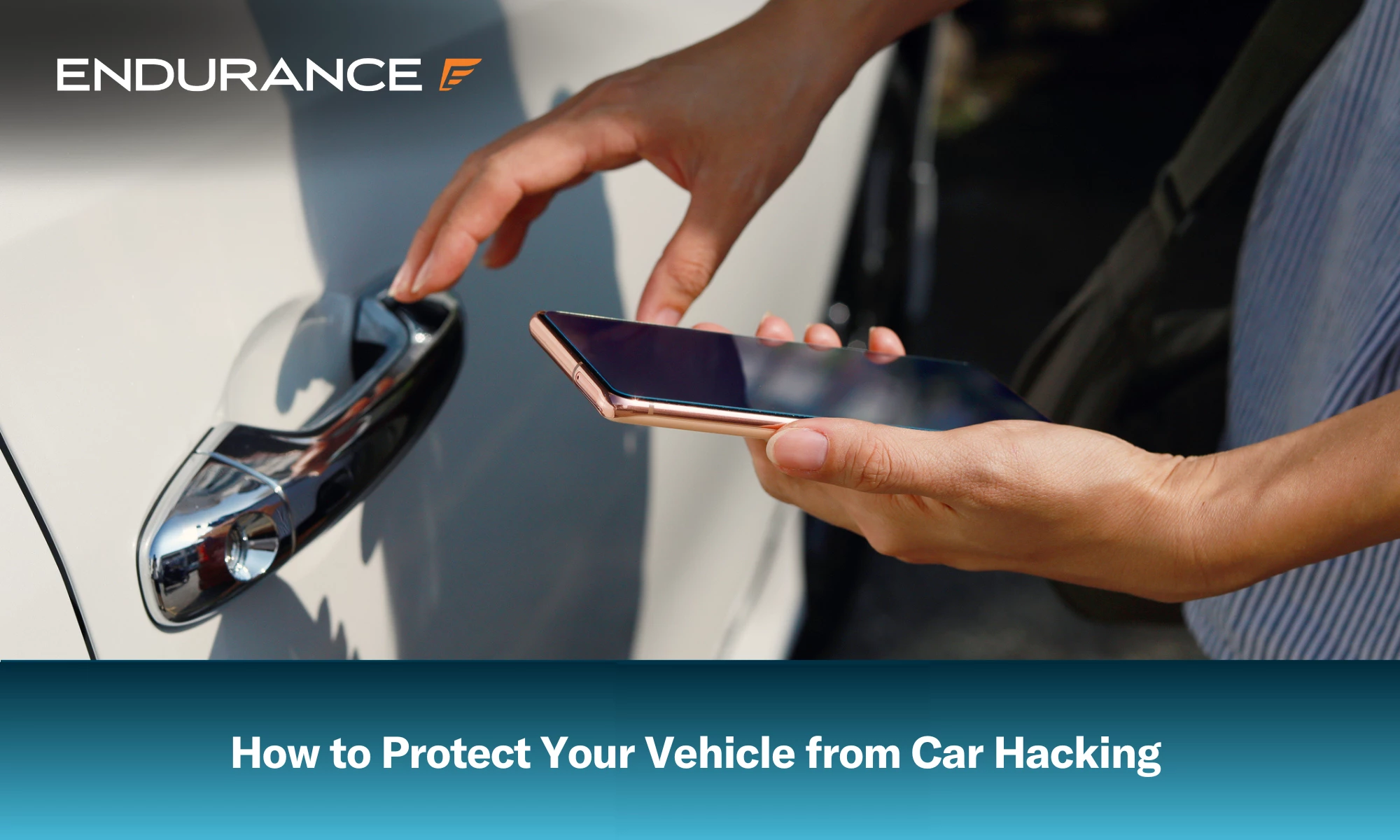Get this deal! Call now.
Speak with a vehicle protection plan specialist and get $300 off any new contract instantly.
Call 866-678-4172
or scan the code below


Technology is advancing rapidly, and cars are becoming so much more than they used to be. Today, almost every vehicle that rolls off the production line has countless systems and sensors, enhancing everything from driving safety to infotainment.
But while these bells and whistles make driving an absolute dream, they unfortunately open a whole new can of worms. With modern cars effectively being a computer on wheels, hackers are finding new ways to make their way in and wreak havoc.
While cyber threats are certainly serious, there are a few ways you can prevent them from happening. Here, we’ll go over how car hacking happens and some of the tips you can follow to keep your car safe.
Any system of a tech-enabled car can be hacked, with infotainment often being the most vulnerable. In the worst-case scenario, a hacker could take total control of your vehicle while it’s in motion. Though this is very unlikely, it’s worth going over potential software exploits so you can be prepared:
As much as these are real threats, it’s more probable that hackers would try to steal your car while it’s unattended. Plenty of vehicles feature remote keyless entry (RKE) systems, offering drivers the convenience of locking, unlocking, and starting their cars without needing to physically touch the key. All that’s required is for the key fob to be nearby. However, thieves have become highly skilled at exploiting these systems to steal cars quickly.
Some of their tactics include:
Thankfully, there are some things you can do to keep your car secure from potential digital intrusions. If you’re concerned about hackers, keep these key tips in mind:
By taking these precautions, you can enjoy the benefits of modern car technology while keeping your vehicle safe from cyber threats. A little digital diligence goes a long way in protecting your pride and joy.
Maintaining a car’s electrical components is crucial for preventing cyberattacks and ensuring overall vehicle security. Modern vehicles rely heavily on interconnected electronic systems, from keyless entry to navigation and infotainment. If these systems are not properly maintained, they become vulnerable to hacking attempts.
Regular software updates are essential for patching known vulnerabilities in vehicle control units, infotainment systems, and wireless communication channels. Additionally, maintaining the integrity of wiring, connectors, and sensors helps reduce the risk of physical tampering. Corroded terminals, loose connections, or exposed wires can serve as entry points for hackers. Properly securing remote access features, such as disabling them when not in use, also limits the opportunities for unauthorized access.
Your vehicle’s electronic system can be some of the most expensive to replace, but there is a way to protect yourself from the cost of unexpected component failure. Almost all Endurance Warranty plans include some level of electronics coverage, so you can have repairs completed without having to worry about your wallet and without leaving your car vulnerable to cyber threats. The higher the level of plan you opt for, the more electronic components you can expect to be covered.
As well as market-leading coverage, our suite of unbeatable benefits goes even further to keep your car running smoothly. With your contract, you’ll get 24/7 roadside assistance (including towing, fuel delivery, and lockout services), rental car reimbursement, and trip interruption coverage. Endurance customers can also unlock a year’s worth of Elite Benefits, which add on up to four tire repairs or replacements annually, key fob replacement, up to $500 in collision discounts, and up to $1,000 in total loss protection.
Still have some questions about car hacking? Our FAQs should have what you’re looking for:
Signs that your car may have been hacked include unexplained behavior such as sudden acceleration or braking without input, unexpected steering movements, or random shutdowns. You might also notice strange noises, increased data usage in your car’s infotainment system, or unfamiliar warning messages on the dashboard. If you experience any of these issues, a professional mechanic should inspect your vehicle to determine if it has been compromised.
Hackers can exploit vulnerabilities in modern vehicles to perform unauthorized actions such as unlocking doors, starting the engine, and disabling security systems. They may use techniques like CAN bus intrusion, signal jamming, relay attacks, and replay attacks to gain access. Once inside, they can manipulate various systems, potentially compromising the vehicle’s safety and security.
Car manufacturers are enhancing automotive cybersecurity by regularly releasing software updates to address vulnerabilities and protect vehicles against potential hacking threats. They also secure wireless communication channels, such as Bluetooth and remote access, by implementing encryption to prevent unauthorized access. Additionally, manufacturers advise users to manage remote access features wisely, disabling them when not in use to minimize potential exploitation.
If you want to keep your car’s electrical systems in check, an Endurance auto protection plan is the ideal solution. Whenever a covered component fails unexpectedly, take your vehicle to the nearest certified auto shop, tell them you’re an Endurance customer, and we’ll take care of the rest.
For more information on our plan range and what’s right for your needs and budget, call an Endurance advisor at (800) 253-8203 or head over to our website and shop online. We also have plenty of other articles on car safety, DIY maintenance, money-saving tips, and more, so take a look at our extended warranty blog if you’d like to keep reading.

We're here to make sure you get the most comprehensive EV protection. That's why we've partnered with Xcelerate Auto to offer you transparent and dependable Tesla coverage.
Want us to contact you about XCare coverage for your Tesla?



Call for $300 off any new plan!
By clicking the button, you consent to Endurance using automated technology to call, email, and text you using the contact info above, including your wireless number, if provided, regarding auto protection or, in California, mechanical breakdown insurance. You also agree to the Endurance Privacy Policy and Terms and Conditions. Consent is not a condition of purchase, and you can withdraw consent at any time. Message and data rates may apply.
Speak with a vehicle protection plan specialist and get $300 off any new contract instantly.
Call 866-678-4172
or scan the code below



Simply fill out the information below and we will follow up fast with your free no-obligation quote.
By clicking the button, you consent to Endurance using automated technology to call, email, and text you using the contact info above, including your wireless number, if provided, regarding auto protection or, in California, mechanical breakdown insurance. You also agree to the Endurance Privacy Policy and Terms and Conditions. Consent is not a condition of purchase, and you can withdraw consent at any time. Message and data rates may apply.

To speak to a vehicle protection plan specialist and save $300
Scan the code below
Chris has been covering the automotive industry and topics ranging from road trips to driverless car technology for around 10 years. His own preference is for retro 4x4s that will stand up to a muddy field in the country.